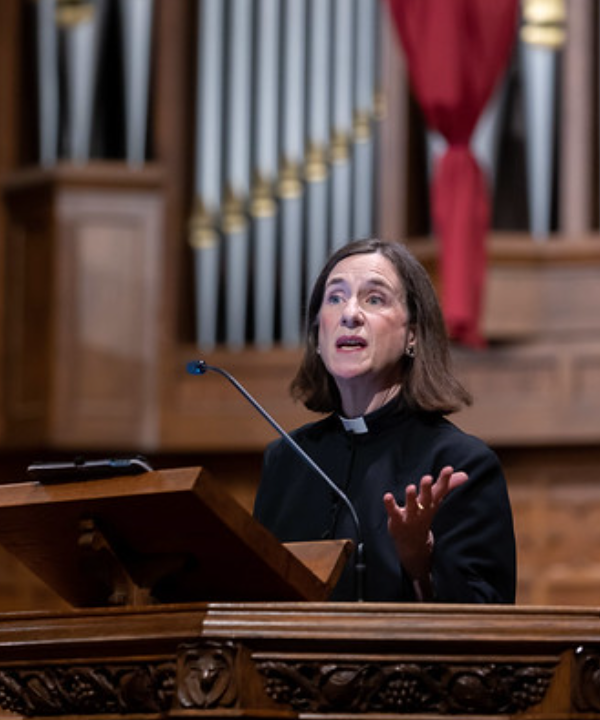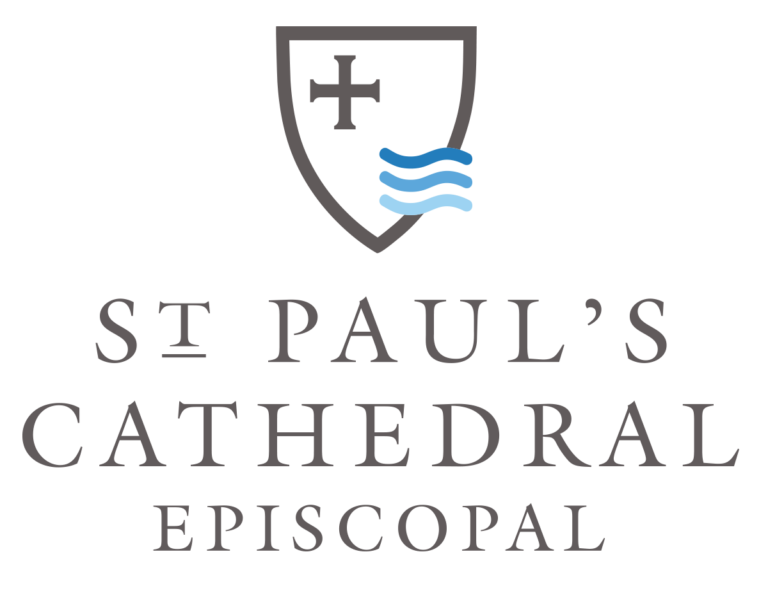
Good Friday 2022
Penelope Bridges
Once again it’s Good Friday, and at last, once again, we are here with our siblings in Christ to remember and re-enact what once happened on this day. We feel the need to be present with Jesus at his death. We don’t want anyone we love to die alone. And when someone we love has died we don’t want to be alone. We need the comforting presence of a friend, a sibling, a priest to be with us in that desolating moment of loss. This is why we come together to observe Good Friday; because this is where we will find others who love Jesus, others whose hearts are breaking today.
But we have not been able to gather like this for the last two Good Fridays. We have been isolated, quarantined, alone with our fears and losses. We have seen too much of suffering and death in these two years. I find that these days I cannot tolerate much suspense, let alone violence or horror, on the screen or in the pages of books. But nevertheless, here I am on Good Friday, in front of the Cross once again.
Grief begets grief: when we attend a funeral, we are often reminded of other funerals and other losses; our tears are shed not only for the one who has just died but for all the other losses we have known. This year especially after all the losses of the past two years, along with our grief and anger over systemic injustice, climate change, and war, Good Friday is a hard day to observe.
El viernes santo nos unemos aquí para recordar y recrear lo que ocurrió una vez en este día. Necesitamos estar con Jesús en su muerte. No queremos que un ser querido muera solo. Y no queremos estar solo en tal momento. Pero en los dos años pasados hemos estado aislados con nuestras ansiedades y nuestras perdidas. Hemos visto demasiado sufrimiento, y por mi parte, no puedo tolerar ni el suspenso ni la violencia. A pesar de eso estoy aquí, al lado de la Cruz otra vez.
When we keep vigil at the Cross today we are witnessing to an innocent man unjustly executed. Behind him stand all the others: the Trayvon Martins and Breanna Taylors, the Ukrainian children, the unnamed victims of human smugglers and drug cartels, and more.
We want to turn our faces away from the suffering man on the cross. A man who has suffocated to death after being flogged, hanging from a cross, is not an attractive sight. The ugliness of the scene is very hard to behold. Isaiah reflects on the suffering servant: “so marred was his appearance, beyond human semblance … he had no form or majesty that we should look at him.” We don’t have a detailed eye-witness account of Jesus’s last minutes, but we do have a present-day, expert, minute-by-minute analysis of the public death of a man by suffocation in the video of the trial of Derek Chauvin for the murder of George Floyd. I have not been able to watch it, but here’s how writer Elizabeth Alexander tells it:
“A pulmonologist named Martin J Tobin, testifying for the prosecution, takes us quietly and inexorably through a meticulous close read of the video of the killing, noting details such as this: Floyd’s boot toe off the ground means half of Chauvin’s weight, 86.9 pounds, is being pressed into Floyd’s neck. He shows us Floyd fighting for breath with every fiber of hie being, illuminating the efforts made with any slightly liberated body part to move to create an airway. When Floyd braces his knuckles on the ground, Dr. Tobin says, ‘This shows he has used up all his resources and shows he is trying to breath with his fingers and knuckles’. He tells us the precise second – five minutes and three seconds in – that Floyd has suffered a catastrophic brain injury. The kneeling on the neck continues for long minutes after that. Then Dr. Tobin shows us the exact moment of Floyd’s death. ‘One second he’s alive and one second he’s no longer. That’s the moment that life goes out of his body.’” The Trayvon Generation by Elizabeth Alexander (NY, Grand Central Publishing, 2022).
That is what the mother of Jesus witnessed on that first Good Friday.
En esta vigília estamos testigos a la ejecución injusta de un hombre inocente. Y vimos también a otros inocentes: Trayvon Martin, Breanna Taylor, los niños ukranianos, los víctimas anónimos de trata de personas y los cárteles de drogas. No queremos mirar al hombre en la Cruz, un hombre asfixiado y horrendo, pero tenemos que mirar, con la madre de Jesús, su sufrimiento.
And now? Now, it is evening. The Gospel tells us,
“They took the body of Jesus and wrapped it with the spices in linen cloths… There was a garden in the place where he was crucified and in the garden was a new tomb in which no one had ever been laid. And so, because it was the Jewish day of preparation and the tomb was nearby, they laid the body there.”
After all the noise: the shouting, the whips, the groans, the hammering of nails, all is quiet.
After all the tumult of people running back and forth, soldiers marching, parades and mobs, there is no movement, no commotion in the tomb.
After the odors of the street, the sweat and the blood, the vinegar, the stench of terror, now we smell the sweet fragrance of myrrh, mingled with the night-blooming flowers in the garden and the freshly turned earth.
The crowds have dispersed, the soldiers have returned to their barracks, the religious authorities are making their preparations for the celebration of Passover. On this Good Friday evening the world rests, and waits. There is nothing more to be done. The worst has happened. There is no more breath in him; he will not stir again.
El evangelio nos cuenta, “Tomaron, pues, el cuerpo de Jesús, y lo envolvieron en lienzos con especias aromáticas… En el lugar donde había sido crucificado, había un huerto, y en el huerto un sepulcro nuevo, en el cual aún no había sido puesto ninguno. Allí, pues, por causa de la preparación de la pascua de los judíos, y porque aquel sepulcro estaba cerca, pusieron a Jesús.”
Después del ruido, después del muchedumbre, después del tumulte, después del hedor de terror, ahora está todo tranquilo. El mundo descansa, lo peor ya ha ocurrido. No le hay ningún aliento en él. El ha muerto.
Sin embargo, en inglés llamamos este día El Viernes Bueno. ¿Porqué? Porqué en este día nos recibimos el regalo gratis de salvación. Porqué nos beneficiamos de un amor inimaginable. Porqué hoy aprendemos que Dios siempre da otra oportunidad a su gente. Porqué lo peor ya ha ocurrido, y todos deben mejorar desde esta hora.
Jesus has died. And yet we call this day Good Friday.
Why is it Good Friday? Because through it we are offered the free gift of salvation. Because we benefit from a love that we can barely imagine, let alone reciprocate. Because today we see the prodigal generosity of our God. Because the events of this day tell us that God will always give humanity second chances. Because God keeps God’s promises, even if we don’t keep ours. Because the worst depths of human evil have been plumbed and it can only get better from here.
God does not wish suffering on human beings: there is nothing intrinsically holy about pain. But voluntary suffering, like that of Jesus on the Cross, can be a sacramental, sacrificial sign of love for others. The labor activist Cesar Chavez undertook voluntary fasts to draw attention to the horrible working conditions of farm laborers in California. He said, “A fast is above all something personal. It is a fast for the purification of my own body, mind, and soul. The fast is also a heartfelt prayer for the purification and strengthening of those who work beside me in the farmworkers movement. The fast is also an act of penitence for those in positions of moral authority and for all men and women who know what is right and just, who know that they can and must do more.” (My translation).
To suffer so that others might respond to the imperative for justice: this is the love that knows no limits. This is the love that we witness on the Cross today.
Dios no quiere que suframos, pero el sufrimiento voluntario, como el de Jesús en la Cruz, puede ser un símbolo del amor sacrificatorio. El activista Cesar Chavez hizo ayunos para llamar la atención pública al sufrimiento de los campesinos en California. Dijo, “Un ayuno es por encima de todo personal. Es un ayuno para la purificación de mi propio cuerpo, mente, y alma. El ayuno también es una oración cordial para la purificación y fortalecimiento para todos aquéllos que trabajan al lado de mí en el movimiento de los campesinos. El ayuno es también un acto de penitencia para aquéllos en las posiciones de autoridad moral y para todos los hombres y mujeres que conocen lo que es correcto y justo, quiénes saben que ellos pueden y deben hacer más.”
En este momento oscuro nos parece que todo esté perdido. Pero, sabemos que Dios está actuando, incluso ahora. Sabemos que la tragedia de la Cruz es redentora, que la muerte ha sido vencida y no tenemos que temer a la tumba. “Si somos muertos con él, también viviremos con él; si sufrimos, también reinaremos con él.”
In this dark moment it may seem as if hope is lost; but we know that God is at work, even here. We know that this tragedy at the Cross is redemptive, that because God was willing to give Godself to suffering and death for love of us, death has been defeated and we need not fear the grave. An early Christian hymn summarizes the good news, “If we have died with him, we shall also live with him; if we endure, we shall also reign with him.” (2 Timothy 2:11b)
May God be merciful to us and bless us, show us the light of his countenance, and come to us. Amen.

